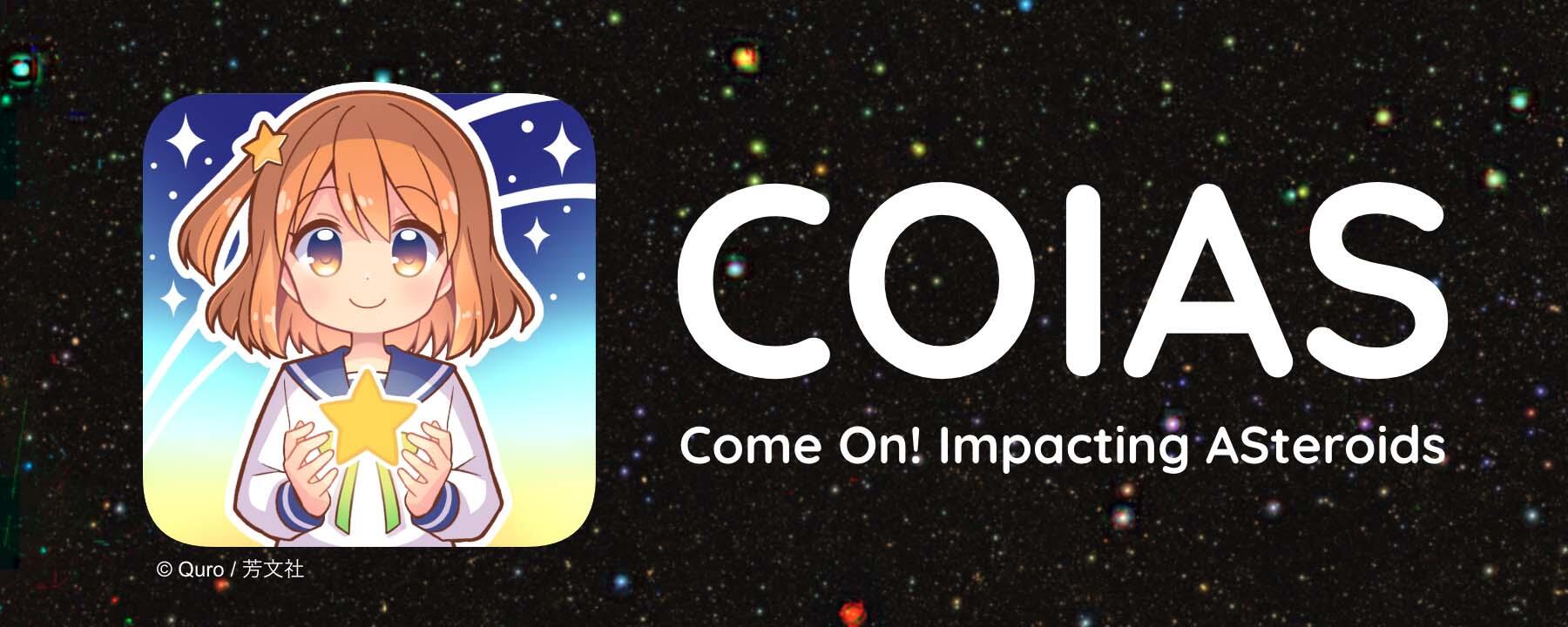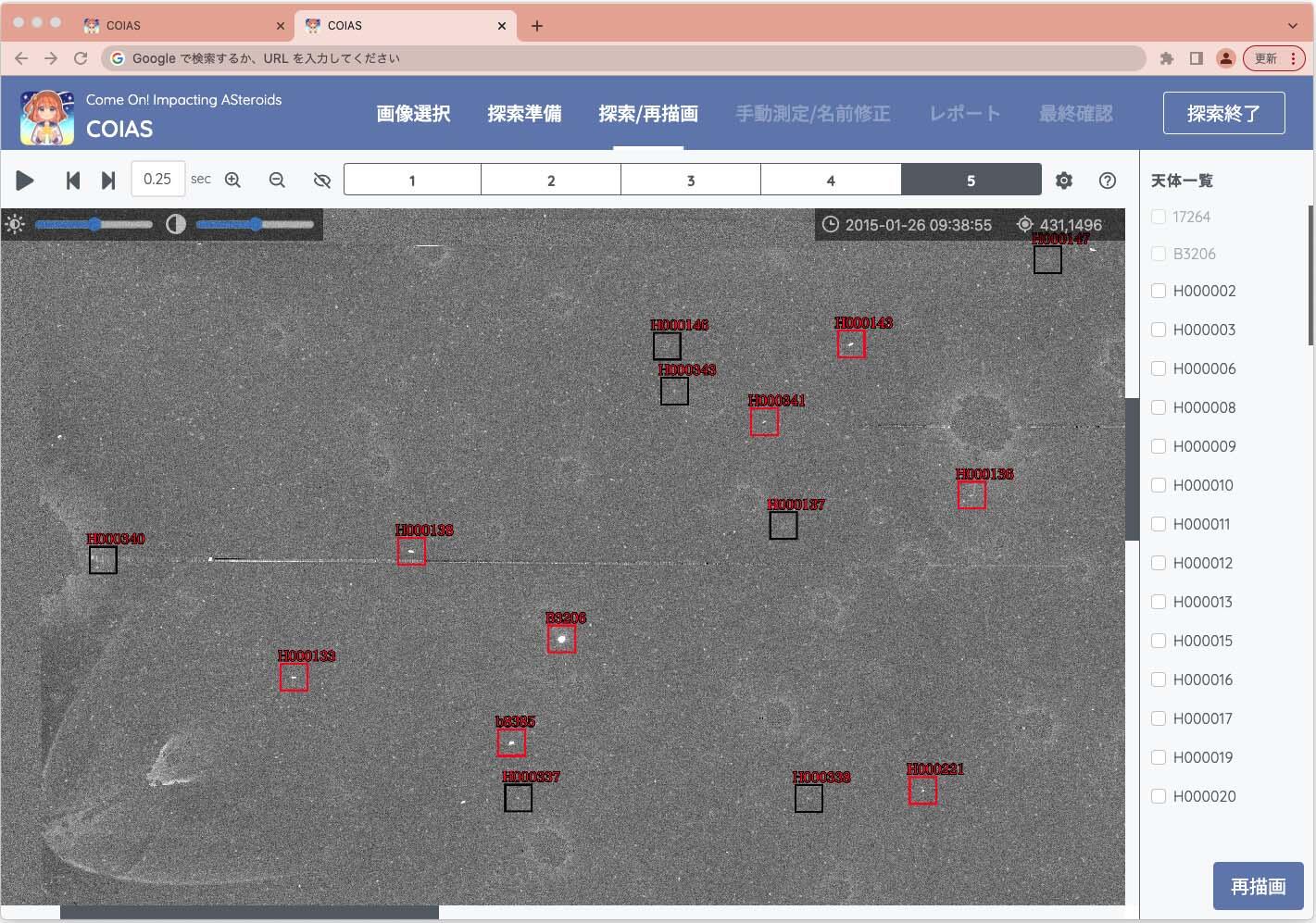COIAS, an application that searches for small Solar System bodies (SSSBs, including asteroids, comets, and trans-Neptunian objects) based on images taken by the Subaru Telescope, was released in July 2023. COIAS enables users to easily detect and report new objects without any special knowledge.

Figure 1: COIAS Banner. COIAS is designed to search for SSSBs through collaboration between researchers and citizen astronomers. Let’s search for various SSSBs with COIAS. (Credit: Quro/Hobunsha)
HSC (Hyper Suprime-Cam) is a 1.77 square degree imaging camera at the prime focus of the Subaru Telescope. A significant survey project called HSC-SSP (HSC Subaru Strategic Program) was carried out from 2014 to 2022, covering 1100 square degrees when completed. A large number of SSSBs must have been captured in the data. However, the search (astrometry, photometry, and report) for SSSBs had not been carried out effectively due to the enormous amount of data, and the complicated procedures.
COIAS(Come On! Impacting ASteroids)is a web application to search for SSSBs. COIAS was developed with "citizen science (also called community science)" in mind, the same concept behind "GALAXY CRUISE." COIAS simplifies the complex processes of detecting and reporting new celestial bodies, offering a user-friendly interface. Moreover, the name "COIAS" comes from the Japanese manga and anime series "Asteroid in Love," which is an abbreviation of the Japanese pronunciation, "K(C)oisuru Asteroids." This naming is intended to attract the younger generation of user to citizen science.
COIAS was launched in July 2023. About 900 users have reported 90,000 new candidate objects to the IAU Minor Planet Center (MPC) as of March 22, 2024. Most of these are very faint objects, approaching 26th magnitude, but still detectable with the Subaru Telescope. Among them, 602 objects have been assigned provisional designation codes, indicating that rough orbits have been estimated based on several nights of data. Two of these objects are classified as near-Earth objects, and 32 as trans-Neptunian objects, both of which are considered rare.

Figure 2: An example of the operating screen in COIAS. Candidates for SSSBs are marked with black rectangles. Users are asked to examine whether these candidates are true SSSBs or noise. Once identified as an SSSB, the color of the rectangle changes to red. (Credit: COIAS Development Team)
Dr. Seitaro Urakawa (Japan Spaceguard Association, Spaceguard Research Center, Senior Researcher), who is the representative of the COIAS Development Team, points out that COIAS has four aims. The first is to clarify the mechanism of matter transport in the Solar System by investigation for the orbits of main belt asteroids a few hundred meters in diameter (Note 1). The second is the contribution to "planetary defense," which includes various activities to take measures against SSSBs impacting on the Earth, by discovering NEOs and clarifying their orbits. The third is the discovery of rare objects, such as TNOs, active asteroids, interstellar objects, and Planet Nine. The fourth is to spread the delight of science through citizen science. Dr. Urakawa also says, "COIAS has not used all of the PDR3 data. In the future, the remaining of PDR3 and the final release data from HSC-SSP will be installed on the COIAS server. Using these data, we want to address these four aims together with the community scientists. Please use COIAS!"
(Note 1) The orbital region between Mars and Jupiter is called the main belt. There are some dynamically unstable regions in the main belt. On the other hand, asteroids a few hundred meters in diameter gently change their semi-major axis due to thermal torques. When the asteroids effected by thermal torque enter the dynamically unstable region, their orbits are dramatically altered and they leave the main belt. In this way, these asteroids are thought to provide examples of physical matter transported to different regions of the Solar System.


